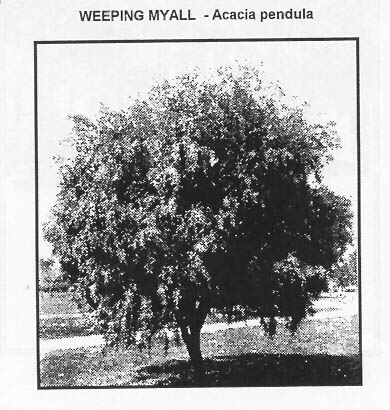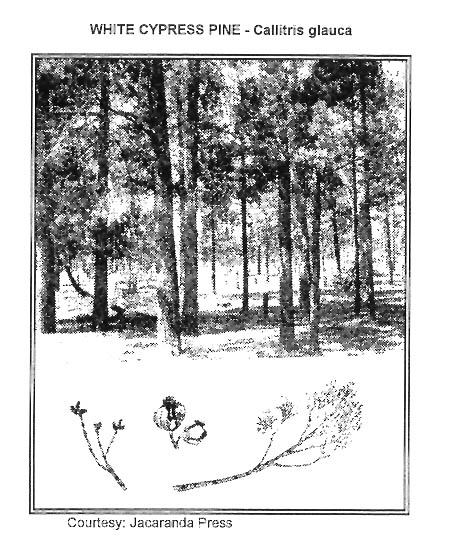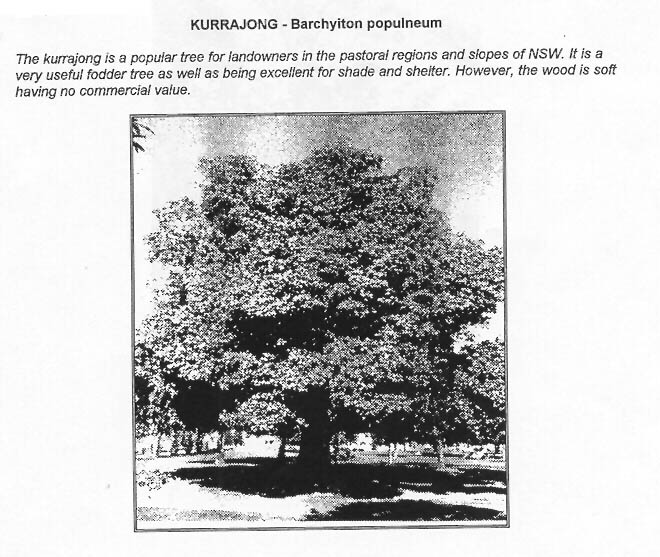



The KURRAJONG is a popular tree for landowners in the pastoral regions and slopes of NSW. It is a very useful fodder tree as well as being excellent for shade and shelter. However, the wood is soft having no commercial value.
LEAVES REDUCED TO 9-16 SCALES.
FRUIT: A WOODY CONE:
BELAH (casuarina cristata)
Cone about 2.5cm in diameter. Rounded as broad as long. BELAH is found throughout the Western Slopes and Plains usually on heavy soils especially those which are alkaline. It is generally confined to moist flats and depressions, floodways or seasonally inundated watercourses. It occasionally grows on red soils on higher ground where there are heavy clay subsoils.
BULL OAK (c leuhmanni)
Cone about 1.5cm in diameter. Flattened, much broader than long. BULL OAK is closely related and similar to BELAH. Generally, however, Bull Oak grows further west and in drier and less fertile soils. It is not as restricted to depressions and may occur in association with a number of species